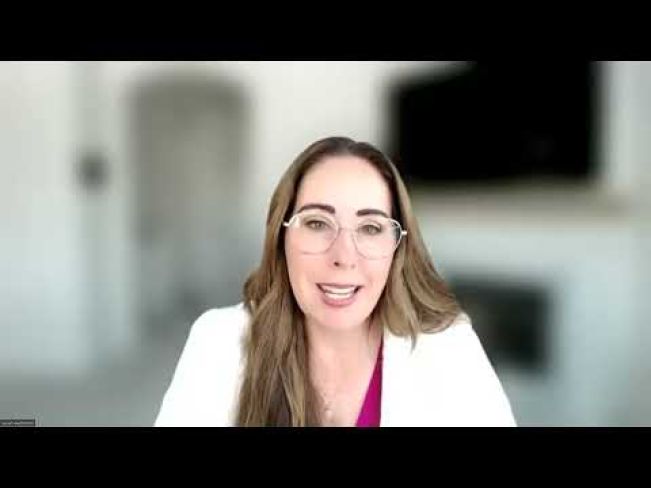
How can nonprofit organizations develop and implement a venture philanthropy investment strategy? As part of The Research Acceleration and Innovation Network (TRAIN) webinar series, FasterCures collaborated with MI Philanthropy to take a deeper dive into the investment strategies used by four biomedical-focused foundations: Foundation for Prader-Willi Research, CureDuchenne, American Cancer Society BrightEdge, and the National Brain Tumor Society.

Moderator
Michael Hund
CEO, EB Research Partnership
Speakers
Susan Hedstrom
Executive Director, Foundation for Prader-Willi Research
Debra Miller
CEO and Founder, CureDuchenne
Alice Pomponio
VP of Innovation & Impact Investing, Managing Director, ACS BrightEdge, American Cancer Society
Kirk Tanner
Chief Scientific Officer and Senior Vice President, Brain Tumor Investment Fund, National Brain Tumor Society
Summary
As the biomedical R&D landscape has evolved, the scope of nonprofit organizations has expanded to include the role of investor, advocate, and supporter. Venture philanthropy funds enable nonprofits to move therapeutic assets from bench to bedside by deploying philanthropic capital into early-stage biotech companies, developing for-profit entities, and leveraging their research infrastructure and brand. These dynamic investment strategies enable nonprofits to have a more significant stake in therapeutic development while generating potential returns to support future work. However, implementing venture philanthropy as a funding strategy can be daunting. To aid in getting attendees started, the webinar panelists had a robust discussion on models for investing, funding strategies, lessons learned, and future venture capital trends.
Models for Investing
Each member of the panel was from an organization with a variety of venture philanthropy experiences. Some organizations had decades of experience, while others had started venture funds in the past several years. All panelists agreed the ultimate goal of venture philanthropy for their foundations was to accelerate and translate scientific discoveries from bench to bedside quickly. To achieve this goal, science must come first over other potential considerations when thinking about investing.
Not only does the science need to be sound, but there needs to be a clear trajectory to advance any asset from discovery to clinical trials to approval to market to patients. Since most investments will be made in small biotech companies, having someone on staff with biotech experience is helpful to provide valuable input on an opportunity’s potential for success or failure.
Panelists also recommended that foundations considering investing do a deep dive to determine their goals based on their strategic plans, visions, and missions. From this exercise, thematic investment areas to target could become apparent. Focusing on these themes makes narrowing down where to make your investments easier and may help determine which investment approaches might be worth pursuing.
Funding Strategies
A primary goal of venture philanthropy is to catalyze market activities in areas where they are not performing and are failing patients. The panelists discussed several funding strategies they have employed to reach this goal over the years, including:
-
spinning out new companies/for-profit entities,
-
acquiring existing companies,
-
using investments to de-risk promising early-stage research and therapeutic candidates,
-
leveraging existing grant programs to begin a venture fund,
-
providing additional nonfinancial support (e.g., expertise and guidance, natural history study data, support with clinical trial design and enrollment) to investment recipients,
-
partnering with other nonprofits with venture philanthropy experience, and
-
aligning investments according to the organization’s mission and priorities.
Lessons Learned
Through their years of experience in venture philanthropy, the panelists have accumulated a great deal of knowledge and shared advice.
• It is imperative to collaborate with knowledgeable partners. However, finding the right people and like-minded collaborators you can trust can be challenging. These collaborators might not be other patient-focused nonprofit organizations; sometimes, the right partner could be a venture capital firm or philanthropic foundation.
• Most venture philanthropy takes the form of long-term investments in small biotech firms. These firms can be sold a number of times before an asset reaches the market. Therefore, obtaining an attorney with thorough knowledge of venture philanthropy, the life sciences industry, and biotech investments is crucial. The right attorney can provide guidance on crafting the optimal deal structures and protect your interests even if a company changes ownership.
Future Trends
The panelists noted that the small biotech companies' market is very volatile, with many seeking funding. Because the market is unstable, venture philanthropy will become even more critical for small biotech firms. The information foundations can provide to industry, such as data to provide proof of concept, has become even more valuable.
Foundations have traditionally invested in therapeutics and drugs, but as gene therapy technology has advanced, some are moving toward investing in platform and delivery technologies that will have broader applications. For example, CureDuchenne, Parent Project Muscular Dystrophy, and the Muscular Dystrophy Association have entered into a collaborative project to fund research to explore alternative gene therapy delivery platforms beyond the Adeno-associated virus (AAV) delivery method and are funding research about antibody-suppressing therapeutics that would allow for gene therapies to function as intended, both of which could advance research for all gene therapies that use AAV vector technologies.
Conclusion
The Milken Institute thanks the panelists and moderator for sharing insights that can be leveraged by other organizations hoping to pursue or advance their venture philanthropy funding strategies.
To learn more about venture philanthropy investing, visit the TRAIN Toolkits as well as this listing of venture philanthropy resources that were compiled as part of the FasterCures LeadersLink program.



